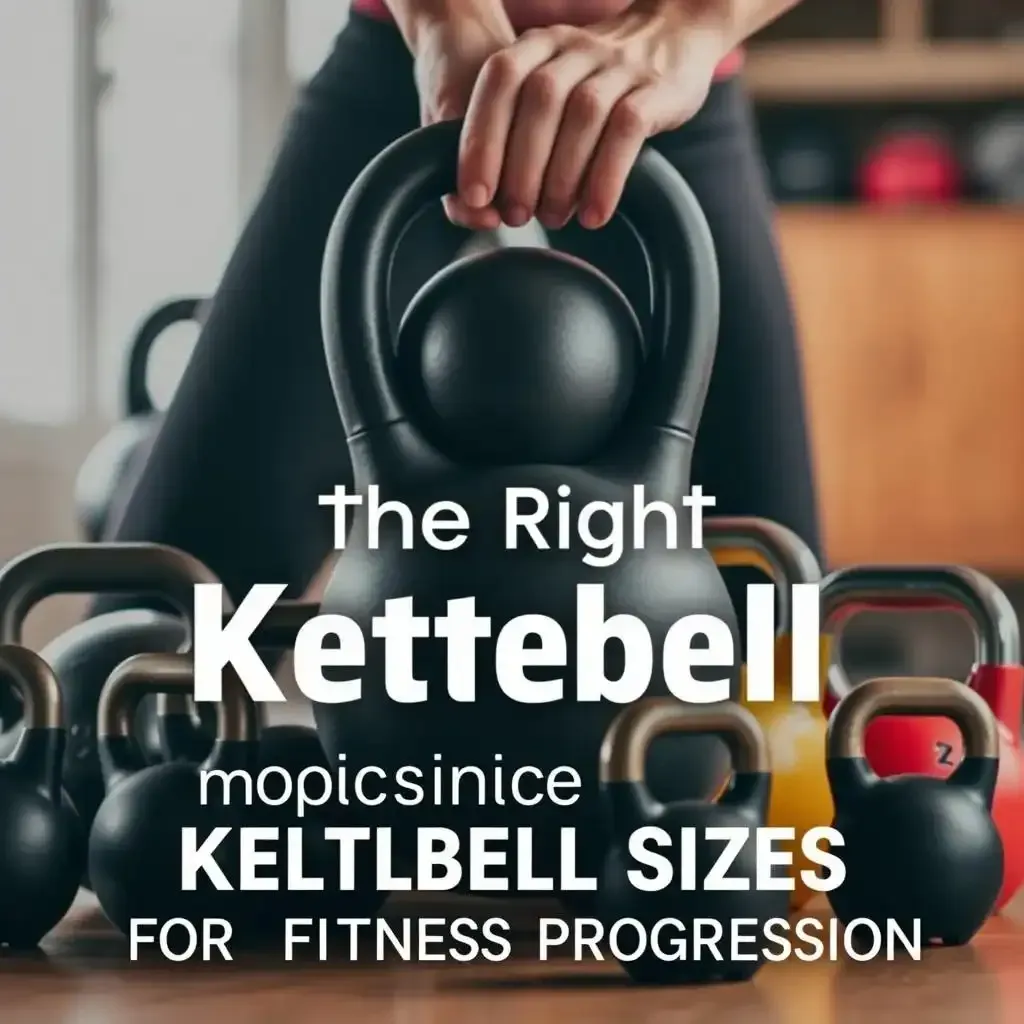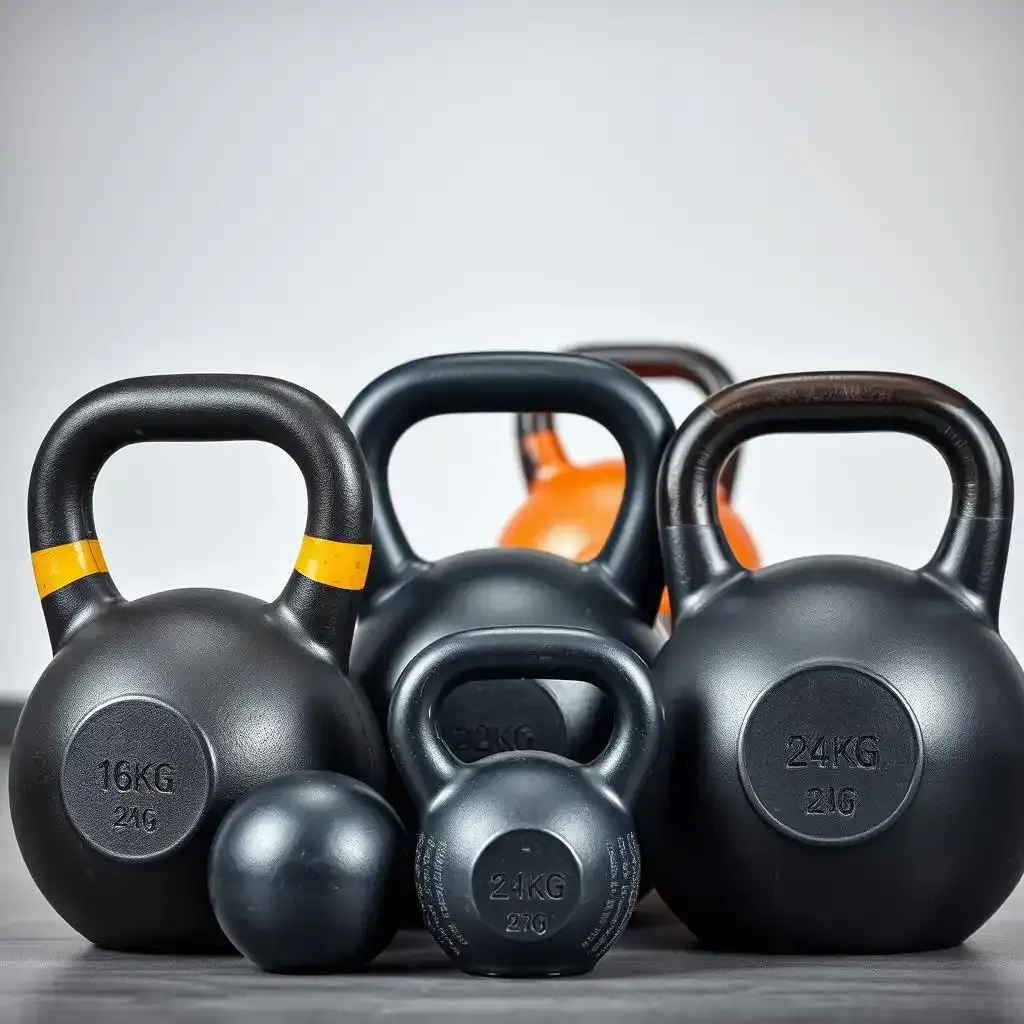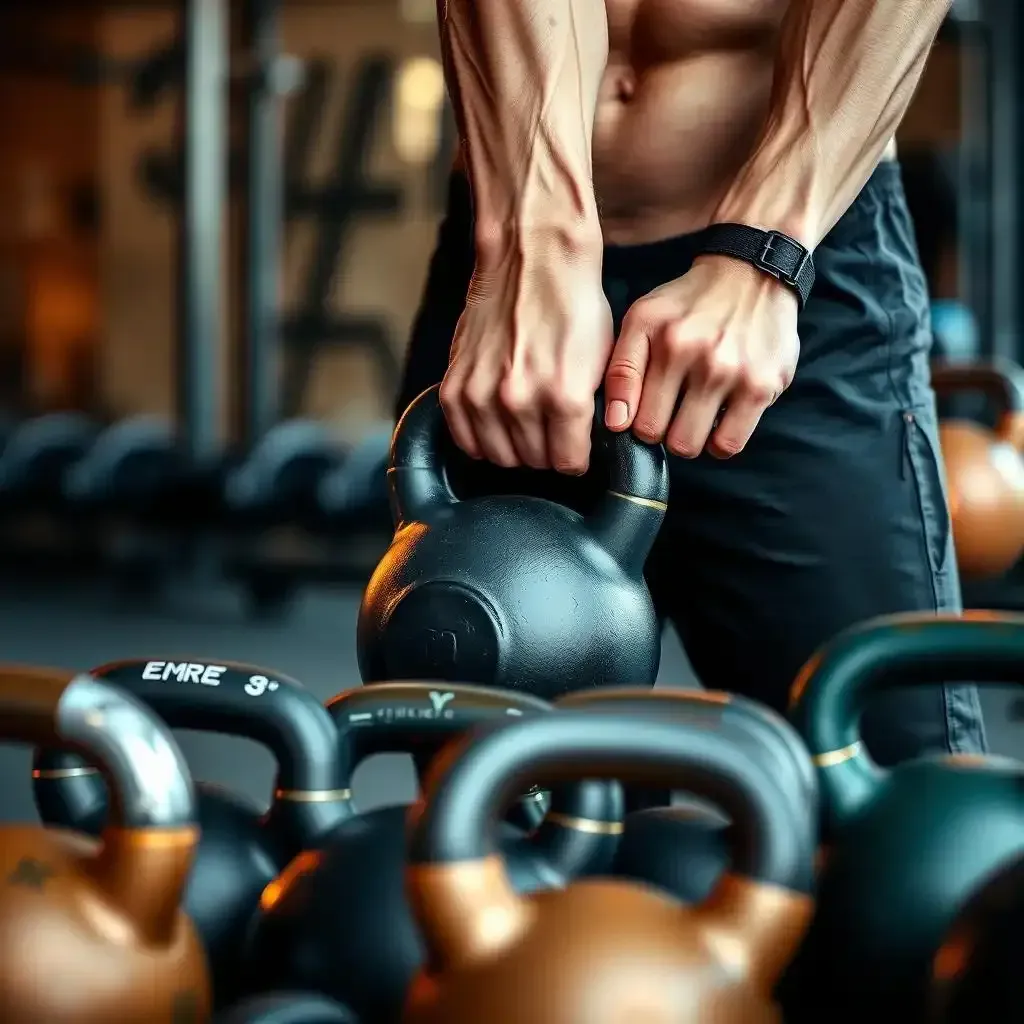Table of Contents
So, you're thinking about adding kettlebells to your workout routine? Smart move! Kettlebells are awesome for building strength, improving your cardio, and getting a seriously effective full-body workout. But before you grab the nearest one and start swinging, there's something crucial you need to consider: kettlebell sizes. Picking the right weight is key to avoiding injuries and maximizing your results. This isn't just about picking a number; it's about finding the perfect weight that challenges you without overwhelming you. We'll walk you through choosing the right kettlebell sizes for your fitness level at kettlebellworkout.homes. Whether you're a complete newbie or a seasoned fitness pro, this guide will help you find the perfect kettlebell size to help you reach your fitness goals. Get ready to find the world of kettlebell training and access your full potential!
Choosing the Right Kettlebell Sizes for Your Fitness Progression

Choosing The Right Kettlebell Sizes For Your Fitness Progression
Starting Small: Building a Solid Foundation
Hey there, fellow kettlebell enthusiast! Let's talk about choosing the right kettlebell size. Think of it like learning to ride a bike – you wouldn't hop on a super-fast, heavy-duty mountain bike right away, would you? You'd start with a smaller, lighter bike to get the hang of it. It's the same with kettlebells. Beginning with a lighter weight helps you learn proper form and technique without risking injury. Trust me, mastering the basics is way more important than lifting super heavy right off the bat. You can build up strength and endurance gradually, and that's the fun part!
I remember when I first started, I grabbed a 12kg kettlebell (that's about 26 pounds). I felt pretty confident, but let's just say my form was... less than perfect. I ended up with a bit of a sore back for a few days! It taught me a valuable lesson: start light and focus on the quality of your movements. Check out our guide on kettlebell basics to get started.
- Start with a weight you can comfortably handle for 10-15 repetitions.
- Focus on perfect form before increasing the weight.
- Listen to your body – if something hurts, stop!
Gradually Increasing Weight: The Path to Progress
Once you've mastered the basics with a lighter kettlebell, it's time to start thinking about increasing the weight. This is where the real fun begins! Think of it like climbing a mountain – you take it one step at a time, celebrating each milestone. Don't rush it; the goal is steady progress, not a race to the top. A good rule of thumb is to increase the weight only when you can easily complete 15-20 repetitions with perfect form.
Remember, consistency is key. It's better to work out regularly with a weight that challenges you than to push yourself too hard and risk injury. I've seen people get discouraged when they try to jump to a heavier weight too soon. They get frustrated, and sometimes give up entirely. Slow and steady wins the race, my friend!
Weight | Reps | Sets |
|---|---|---|
8 kg (18 lbs) | 15 | 3 |
12 kg (26 lbs) | 12 | 3 |
16 kg (35 lbs) | 10 | 3 |
Kettlebell Sizes for Beginners: Starting Your Fitness Exploration
So, you're diving into the world of kettlebells? Awesome! It's like discovering a secret weapon for getting seriously fit. But before you go all Arnold Schwarzenegger on us, let's talk kettlebell sizes. Picking the right weight is super important, especially when you're just starting. Imagine trying to learn to juggle with bowling balls – not gonna happen, right? You'd start with something lighter, like tennis balls, to get the hang of it. Same deal with kettlebells. You want to focus on getting your form perfect. That's way more important than lifting a ton of weight right away. Trust me, I learned that the hard way!
I remember my first kettlebell workout. I was all gung-ho, grabbing a 16kg (that's about 35 pounds) kettlebell. My arms felt like jelly after five minutes! My form was terrible, and I was pretty sore the next day. It made me realize how important it is to start small. A lighter kettlebell lets you focus on perfect form, which prevents injuries and actually helps you get stronger faster. Check out our for more tips.
- For women, start with an 8kg (18 lbs) or 10kg (22lbs) kettlebell.
- For men, a 12kg (26 lbs) or 14kg (31lbs) kettlebell is a good starting point.
- Listen to your body. If you feel pain, stop!
Don't be afraid to start with something even lighter if you're feeling unsure. It's way better to build a solid base than to get injured early on. Think of it like building a house – you wouldn’t start with the roof, would you? You'd start with the foundation, and that’s exactly what you're doing when you start with a lighter kettlebell. You're building a strong foundation for your fitness process. Once you've got the basics down pat, you can gradually increase the weight, and that's where the real fun begins!
And here's a little secret: even experienced lifters sometimes go back to lighter weights to work on their form. It's not about how much you lift, it's about how well you lift it. So, take your time, focus on quality over quantity, and you'll see amazing results. You can find beginner-friendly routines on our site, like this beginner kettlebell workout.
Kettlebell Weight | Recommended Exercises | Reps/Sets |
|---|---|---|
8kg (18lbs) | Kettlebell Swings, Goblet Squats | 10-12 reps, 3 sets |
12kg (26lbs) | Kettlebell Rows, Turkish Get-Ups | 8-10 reps, 3 sets |
Intermediate and Advanced Kettlebell Sizes: Leveling Up Your Workout

Intermediate And Advanced Kettlebell Sizes Leveling Up Your Workout
Okay, so you've conquered the beginner kettlebell sizes. You're feeling strong, your form's solid, and you're ready for a challenge. That's awesome! This is where things get really exciting. Think of it like graduating from training wheels to a full-blown bike – now you can really pick up speed and explore new terrain. But remember, increasing the weight isn't just about lifting heavier; it's about continuing that steady, consistent progress. We're talking about pushing your limits safely and intelligently. Jumping straight to a 40kg kettlebell after only using an 8kg one is a recipe for disaster. Start slow, and listen to your body!
For intermediate lifters, gradually increasing to 16kg (women) or 24kg (men) is a common jump. Focus on complex movements like Turkish get-ups. These are excellent for building strength and improving coordination. I found that mastering the Turkish get-up completely transformed my overall body awareness. Don't forget to check out our kettlebell exercises for beginners guide for some great ideas. Remember, perfect form is still paramount. It’s better to do fewer reps with impeccable form than many reps with sloppy form. Sloppy form leads to injuries, and nobody wants that!
- Increase weight gradually – don't rush it!
- Focus on complex movements to challenge yourself.
- Prioritize perfect form over the amount of weight lifted.
As you progress to an advanced level, you might find yourself using kettlebells considering 28kg, 32kg, or even more. At this stage, you'll be incorporating more advanced exercises. Think snatches, cleans, and various presses. It's like mastering a musical instrument – the more you practice, the more complex the pieces you can play. I can still remember that first time I successfully completed a clean and jerk with a 24kg kettlebell. It was an incredible feeling. But, and this is important, you should always prioritize safety. If you're unsure about an exercise, consult a qualified trainer. There are some fantastic advanced routines you can find online, or even better, check out our advanced kettlebell routines page for inspiration.
Remember, advanced doesn't mean reckless. It means you've built a strong foundation and are ready for a new level of challenge. It's all about continuous learning and pushing your limits in a smart and safe way. Listen to your body, and don't be afraid to take rest days when you need them. The best workout is the one you stick with, and that means prioritizing your health and well-being. This is similar to mastering any skill – whether it’s playing a sport, learning to code, or building furniture. The key is consistent effort and smart progression.
Kettlebell Weight | Recommended Exercises | Reps/Sets |
|---|---|---|
20 kg (44 lbs) | Clean and Jerk, Snatch | 8-10 reps, 3 sets |
24 kg (53 lbs) | Turkish Get-Ups, Windmills | 6-8 reps, 3 sets |
Finding the Perfect Kettlebell Size: A Guide for All Fitness Levels

Finding The Perfect Kettlebell Size A Guide For All Fitness Levels
Choosing the right kettlebell size can make all the difference in your workout. It's like finding the perfect pair of shoes – you want it to feel just right, not too heavy, not too light. Think of it like a puzzle piece that fits snugly into place. With the right kettlebell size, you'll be able to perform exercises with proper form and technique, which is essential for safety and effectiveness.
When I first started with kettlebells, I was clueless. I grabbed a random weight and started swinging it around (yes, I know, bad idea!). Luckily, I didn't injure myself too badly, but it was a painful lesson learned. Now, I always recommend starting with a lighter weight and gradually increasing it as you build strength and confidence. It's better to err on the side of caution than to risk injury. For more tips on getting started with kettlebells, check out our Kettlebell for Newbies guide.
Understanding Kettlebell Sizes and Weights
Kettlebell Weight | Recommended Exercises | Reps/Sets |
|---|---|---|
8 kg (18 lbs) | Kettlebell Swings, Goblet Squats | 10-12 reps, 3 sets |
12 kg (26 lbs) | Kettlebell Rows, Turkish Get-Ups | 8-10 reps, 3 sets |
Choosing the Right Kettlebell Size for Your Fitness Level
So, how do you choose the right kettlebell size? It's all about assessing your current fitness level and goals. If you're a beginner, start with a lighter weight and gradually increase it as you build strength and endurance. If you're more advanced, you can challenge yourself with heavier weights, but always prioritize proper form and technique.
Remember, the right kettlebell size is just the starting point. What's more important is that you're consistent with your workouts and keep pushing yourself to new heights. For more advanced routines and workout ideas, check out our page.
- Assess your current fitness level and goals.
- Choose a kettlebell size that feels challenging but manageable.
- Gradually increase the weight as you build strength and endurance.
Final Thought
Finding the right kettlebell size is a personal process, but hopefully, this guide has shed some light on the process. Remember, it's all about finding a weight that challenges you without causing injury. Start small, listen to your body, and gradually increase the weight as you get stronger. Happy lifting!